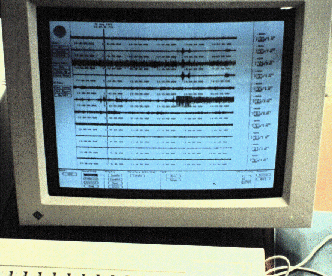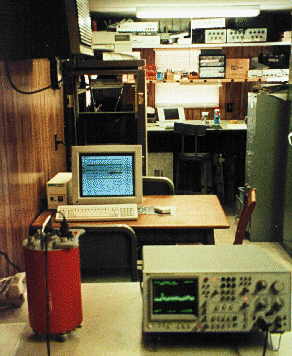

Before installing all 9 elements, there were extensive tests performed at Lajitas. At the time a 24-bit 6 channel recording system (developed for the GSETT-2 tests) was delivering continuous seismic data to SMU's lab in Dallas. This system included short period and broadband three component seismometers in a surface vault. It also had the capability to record 7 additional 16 bit channels.
As a first experiment, a small 3 element mini-array was deployed using Spirl-4 cables. Vertical sensors were installed in shallow (2 foot) vaults about 1/4 mile from the existing central site. Data collected during this time confirmed earlier results that under quiet conditions, even at such short distances, the background noise shows little correlation.
The experiment also demonstrated the danger of a cabled system in the
Lajitas environment. A nearby summer thunderstorm induced large currents
on the cables, blowing components off of the surge protection boards and
then fusing components in the power supply, analog preamps, and portions
of the digital circuits. Induced currents from lightning would continue
to be a problem through much of the testing program.
